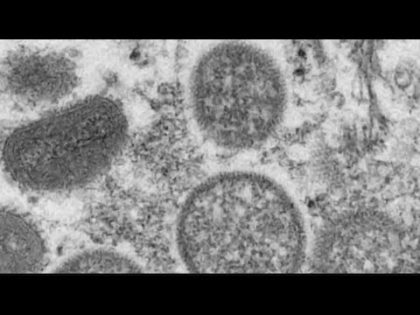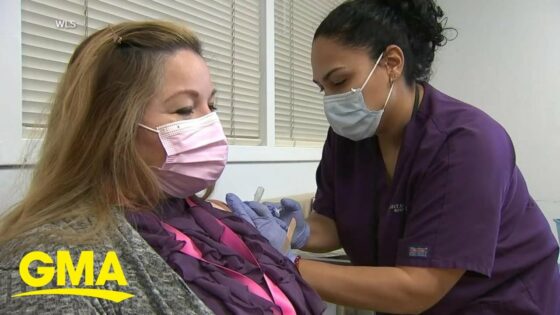CDC, approximately 250,000 kindergartens in the United States are vulnerable to measles due to the s
#UnitedStates #BreakingNews:Business #Coronavirus #Diseaseoutbreaks
https://gotopnews.com/post/1364424
In this listener note from Disease Control and Prevention Centers , fine cross -sectional transmission electron microgram reveals the ultrastruistic appearance of a single virus particle or ‘virion’ of measles virus. “We know that the scope of measles, mumps and rubella vaccination for more than a decade has been the lowest for more than ten years,” Peacock, Peacock, “and Peacock.Said. Head of Vaccination Services of CDC. “Although this doesn’t seem important, but it means that approximately 250,000 kindergartens are not protected against measles,” said during the call to journalists.Said. In a report published on Thursday, CDC found that 93% of kindergartens were up to date with vaccines requested from state in 2021-22 academic year and a decrease of 2% from 2019-20. According disease control and prevention centers, approximately one quarter of the kindergarten is vulnerable to measles due a decrease in vaccination during sponge. CDC suggests that children until the age of 6 have measles, mumps measles vaccine as well as diphtheria, tetanus and whooping cough vaccines, Chickenpox Children’s paralysis. Statements generally need these vaccines for children entering kindergarten.-22 academic year is 93.5%, 95% to prevent outbreaks are under scope of target. Columbus, Ohio, an ongoing measles epidemic, 33 of the 83 children who were taken to hospital. None of the children . Dr.”These outbreaks harm children and cause significant interruptions in learning, growth and development opportunities. “”This is worrying and there must be an action for all of us.” The CDC report looked at the second dose of the measles, mumps and rubella vaccine of kindergartens. Measles, the virus can linger for up to two hours when coughing or sneezing and polluting is a very infectious virus. When a person touches a contaminated surface and then touches his eyes, nose or mouth. According to CDC, the virus is so contagious that a single person can spread the virus to 90% of people who do not have immunity through vaccination or previous infection. Measles can be dangerous for children under 5 years of age, adults older than 20 years, pregnant women and people who are compromised by immune systems. 1 out of 5 people who have captured him is taken to hospital. 1 out of 20 children receive pneumonia and one out of 1000 people have brain swelling that can cause disabled people. Simptomas start with high fever, cough, nose and red eyes.The stains appear and the rash explodes in the body. CDC officials said that disruptions to schools and health system during the COVİD pandemi were largely responsible for the decline in vaccination rates. “We know that Pandemin really has a deduction in health systems,” Peacock said. “Some of this is that good children’s visits have been kidnapped, and people are still trying to capture these good children’s visits.” “We know that schools have a lot to focus on, and in some cases, perhaps they couldn’t collect all these documents on vaccines. “”Or because children are at home for many pandemia at home, this may not be emphasized when focusing on testing and doing all other things about pandema.” In a separate report published on Thursday, scope of what is known as CDC, United Seven Vaccine Series increased slightly among children born in 2018-19 compared to children born in 2016-17. These seven vaccine series include measles, Suiçpoks, Children’s paralysis, Hepatitis B, Streptococcus Pneumoniae, Haemophilus influenzae or hybds and diphtheria, Tetanus and Pertussis. However, the CDC found that there were large income and racial inequalities. The scope of the hair decreased to 5% during pandemic for those living in rural areas or for those living in rural areas. Black and Spanish children had lower vaccines than white children. O’Lleary, although wrong information about vaccines is a problem, the majority of parents are still instilled in their children. O’Leary, “We really have to focus on the things we need to focus on access and child poverty.


















